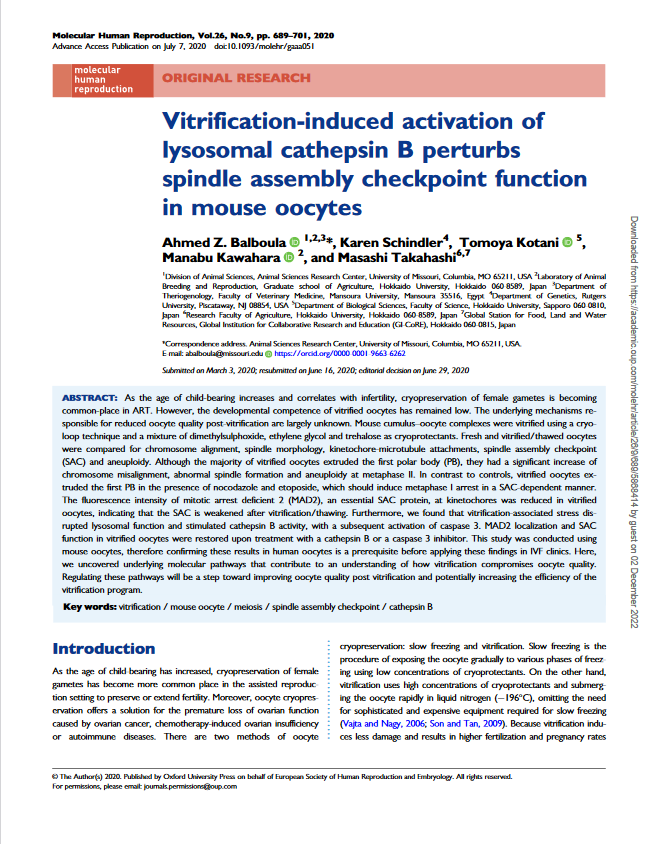02.12.2022
Vitrification-induced activation of lysosomal cathepsin B perturbs spindle assembly checkpoint function in mouse oocytes
Molecular Human Reproduction, 2020
Abstract
As the age of child-bearing increases and correlates with infertility, cryopreservation of female gametes is becoming common-place in ART. However, the developmental competence of vitrified oocytes has remained low. The underlying mechanisms responsible for reduced oocyte quality post-vitrification are largely unknown. Mouse cumulus–oocyte complexes were vitrified using a cryoloop technique and a mixture of dimethylsulphoxide, ethylene glycol and trehalose as cryoprotectants. Fresh and vitrified/thawed oocytes were compared for chromosome alignment, spindle morphology, kinetochore-microtubule attachments, spindle assembly checkpoint (SAC) and aneuploidy. Although the majority of vitrified oocytes extruded the first polar body (PB), they had a significant increase of chromosome misalignment, abnormal spindle formation and aneuploidy at metaphase II. In contrast to controls, vitrified oocytes extruded the first PB in the presence of nocodazole and etoposide, which should induce metaphase I arrest in a SAC-dependent manner. The fluorescence intensity of mitotic arrest deficient 2 (MAD2), an essential SAC protein, at kinetochores was reduced in vitrified oocytes, indicating that the SAC is weakened after vitrification/thawing. Furthermore, we found that vitrification-associated stress disrupted lysosomal function and stimulated cathepsin B activity, with a subsequent activation of caspase 3. MAD2 localization and SAC function in vitrified oocytes were restored upon treatment with a cathepsin B or a caspase 3 inhibitor. This study was conducted using mouse oocytes, therefore confirming these results in human oocytes is a prerequisite before applying these findings in IVF clinics. Here, we uncovered underlying molecular pathways that contribute to an understanding of how vitrification compromises oocyte quality. Regulating these pathways will be a step toward improving oocyte quality post vitrification and potentially increasing the efficiency of the vitrification program.
Magic Red Cathepsin B Assay Kit (ICT-938) manufactured by our partner ImmunoChemistry Technologies is featured in this study.
>> View article


